Sunflower seed is the primary ingredient in the majority of backyard bird feeders since it draws the broadest range of birds. To diversify the birds that frequent your garden, try using different kinds of seeds.
Red millet, oats, and other “fillers” are typically not appetizing to most birds, and combinations containing them can produce a lot of trash when the birds filter through them.
It’s easy to get confused about the finest seeds and mixtures to give your backyard birds when you visit the supermarket and see all the different bags of food.
This post will be helpful if you’re new to feeding birds or you’re fed up with how much food is going to waste at your feeders.
You can anticipate learning about what seeds do birds eat by looking at various kinds of seeds in this article.
What Seeds Do Birds Eat?
1. Safflower Seed

Ideal for Large and medium-sized songbirds. The annual flower seed safflower is a favorite of medium and large songbirds. Safflower is cultivated for commercial purposes all over the world, with Asia, Africa, and India producing the most.
Although safflower appears to be a white sunflower seed, it comes from a totally different plant. Doves, titmice, and cardinals prefer white seeds, although other songbirds will also eat safflower seeds if sunflower seeds aren’t available.
Safflower is often more expensive than other seeds, but it can be used in premium mixes along with millet or sunflower chips to make it more cost-effective and enticing to a wider variety of birds.
This seed is a wonderful choice if bird feeder pests are an issue because squirrels and other wildlife typically avoid it because of its rather harsh flavor.
Safflower can be offered in any feeder that can accommodate sunflower seeds, such as hopper feeders, feeders with a lot of mesh, and open trays and dishes.
2. Black-Oil Sunflower Seed

The most common type of shelled seed consumed by almost all birds is the oil sunflower seed. It’s odd that this type of sunflower is not one that people eat.
It was created to be harvested for the oil it contains, but it was soon realized how much birds adore the substance!
Black-oil shells are smaller and thinner than striped sunflower shells, making them easier to split open and less messy.
Black-oil sunflowers are attractive to a variety of species, including titmice, chickadees, cardinals, jays, woodpeckers, nuthatches, grosbeaks, finches, and nutcrackers.
They’re also attractive to grackles, doves, and blackbirds. There aren’t many birds who enjoy black-oil sunflower seed; therefore, it would have been simpler to compile a list of those that do.
3. Striped Sunflower Seed
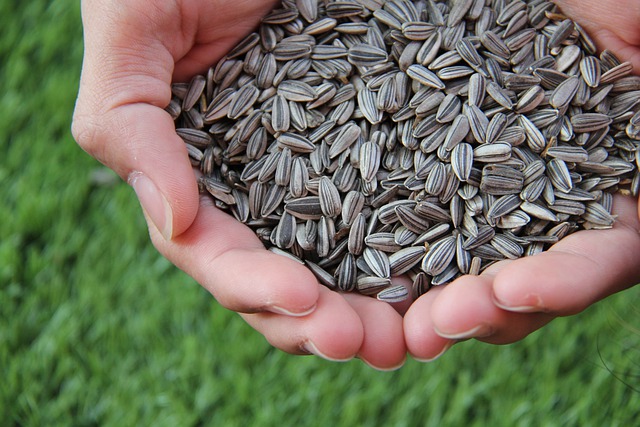
Favorable for Bigger birds (with stronger beaks). Striped sunflower seed’s harder and thicker hulls make it more challenging for smaller or weaker-billed birds to eat than a black oil sunflower seed.
All birds that eat other kinds of sunflower seed will consume striped sunflower seed, although larger species like cardinals, jays, and grackles prefer it.
Birds naturally prioritize easier, more accessible meals first. Thus, the striped seed may be consumed last if both varieties of sunflower seeds are present in the same mixture.
4. Hulled Sunflower Seed

A sunflower seed that has already had its shell removed is referred to as a hulled sunflower. Sunflower chips or kernels are referred to by several common names.
Hulled sunflower seeds are wildly popular at feeders because they are much easier to consume than seeds that are still in their shells!
Since it isn’t a bird of prey, practically any other sort of bird will eat it. Almost every day, I need to replenish my feeders with hulled sunflower seeds.
A sunflower that has already had its shell removed costs more per pound than a sunflower that hasn’t been taken from its husk.
But you must remember that when you purchase black oil or striped sunflower, you are paying for this waste because the shells won’t be consumed.
Additionally, the hulled sunflower is well-liked for its cleanliness. There are no more shells to tidy up!
Cardinals, jays, blackbirds, doves, grosbeaks, certain, finches, chickadees, titmice, nuthatches, juncos, sparrows, wrens, goldfinches, towhees, and grackles are among the birds that hulled sunflower attracts.
5. Shelled And Cracked Corn Seed
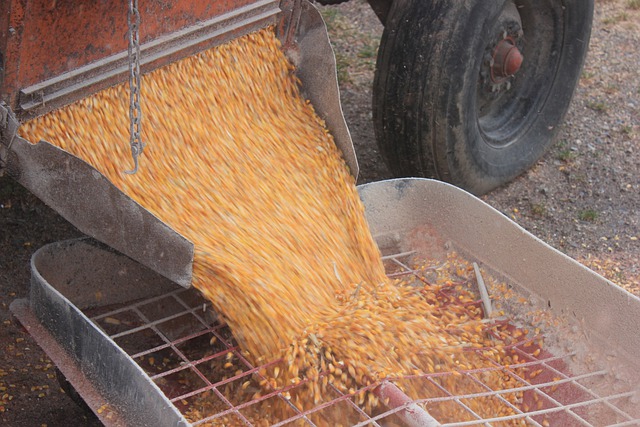
A variety of animals, including grouse, pheasants, cranes, turkeys, quails, cardinals, grosbeaks, crows, ravens, jays, doves, and others, eat corn. Sadly, corn has two significant issues.
First off, none of these animals—including House Sparrows, cowbirds, starlings, geese, bears, raccoons, and deer—should receive our financial support.
Second, because aflatoxins are exceedingly poisonous even at low concentrations, corn is the meal for birds that is most likely to contain them.
Never purchase corn in plastic bags, keep it dry, never provide it in quantities that cannot be used on a day when it is raining or extremely humid, and be mindful of raking up old corn.
Never serve maize that has been colored red. Fungicides are frequently applied to corn intended for planting and are often tagged with red dye as a warning. All birds, livestock, and humans are extremely harmful to it.
Never serve microwave popcorn or buttered popcorn. Popcorn degrades quite quickly.
On tray feeders, corn should be provided in relatively small portions at a time. Avoid distributing it in tube feeders that can retain moisture.
The tastiest and most appealing maize for birds is coarsely ground; however, more finely ground corn can be combined with other seeds if preferred.
Cracked corn is sometimes used as filler in commercial mixes to increase weight and volume while bringing down the cost of the mixture as a whole.
6. Nyjer (Thistle)
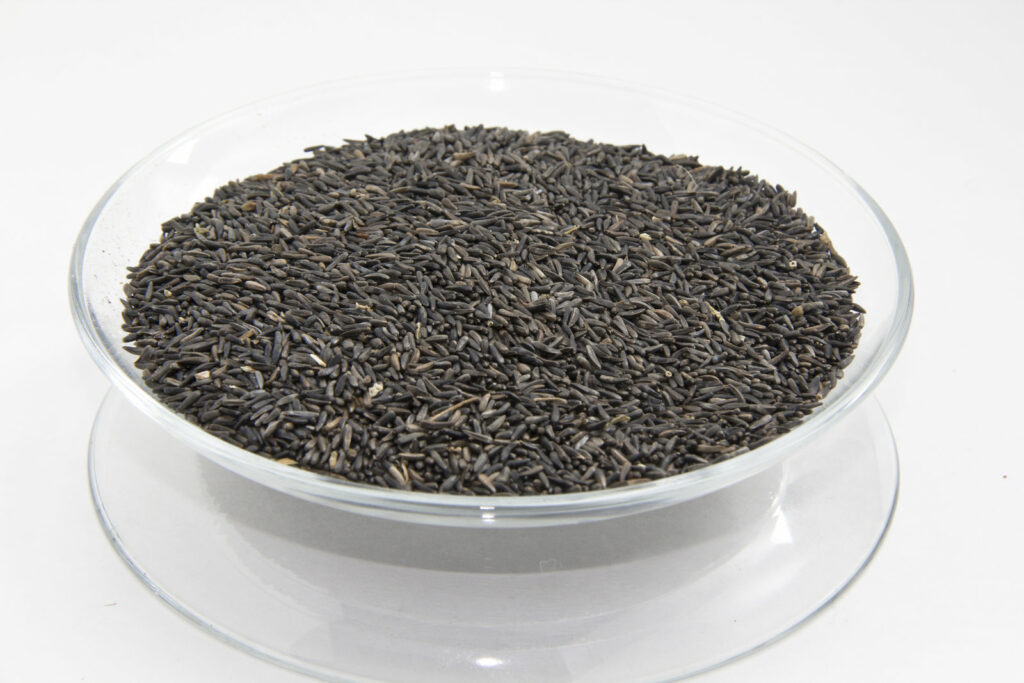
One of my favorite birds to watch and attract is the goldfinch. I like to see how they fly over the yard like they’re on a roller coaster and how they can cling to feeders in any position, even upside down!
Feeding nyjer to goldfinches is a great idea because they can only consume the smallest seeds due to their small beaks.
You don’t need to be concerned about nyjer seed turning into an unwelcome weed because it is not genuinely related to the thistle. Nyjer seed is heated to sterilization before being sold to prevent germination and growth.
Nyjer is one of the bird seed varieties that is most susceptible to spoiling. Birds frequently completely disregard seed that is not fresh.
You should get a feeder that is made specifically for spreading nyjer if you wish to feed it.
7. Millet

This seed is ideal for smaller birds. Small birds love millet, also known as white proso millet, which is a type of grass seed. Both the white and the red types are readily accessible and ideal as a food for backyard birds. The size of this seed is comparable to a rice grain.
Small birds benefit from the high starch, protein, fiber, and fat content of millet as a dietary source. Finches, juncos, buntings, sparrows, and towhees are its main devotees; however, many other birds will try it, especially when it is mixed with other kinds of seed.
The seed can be cultivated in a bird garden as a natural food source, or it can be scattered on the ground to attract birds that feed on the ground.
The millet needs to be kept as dry as possible. Only leave out what can be consumed in a single day, or place the seed in low tray feeders with good drainage.
8. White Proso Millet
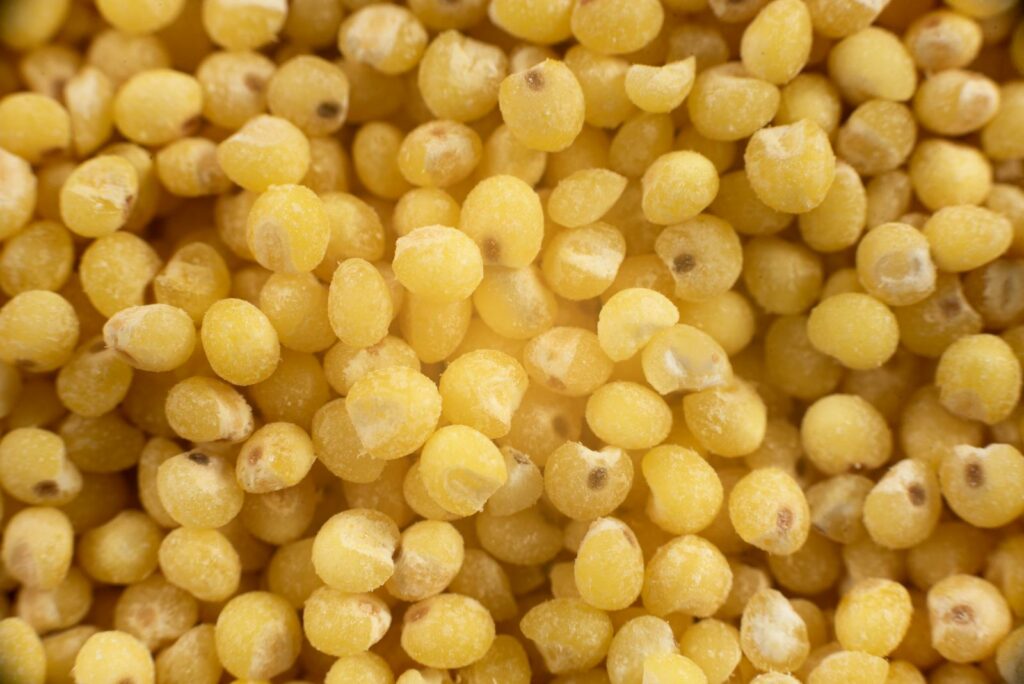
White millet is frequently sprinkled on the ground since ground-feeding birds enjoy it so much. This is a great practice as long as there isn’t more left out than what the birds can consume in a day.
For white millet, too, low-set tray feeders with adequate drainage can be a very wise choice.
9. Red Milo Seed (Sorghum)

This seed is ideal and best for Larger birds and game birds. Although milo is a filler seed with limited nutritional value for birds, those who consume it do get some calcium, iron, and fiber.
The kind of birds that will eat milo in a particular backyard may change based on the availability of better food sources.
Milo is frequently used as a filler in extremely affordable commercial seed mixtures, which reduces their value because a lot of the seed may be lost.
Use hopper, dish, or platform feeders where birds can easily obtain milo or birdseed blends with high quantities of milo.
It might be recommended to only provide this seed in small amounts and to only refill the container once it has been entirely consumed in order to prevent excessive seed waste or spilling.
10. Peanuts without the Shell

An excellent item to offer at your feeding station is peanuts. Not only do birds enjoy eating them, but they are also nutritious and offer a sizable quantity of protein and fat, all of which are necessary for birds, particularly during the chilly winter months.
If at all possible, make sure to purchase roasted, unsalted peanuts!
You have the option of giving peanuts either in the shell or already removed. Since most birds are unable to break open a tough peanut shell, the primary distinction is which birds you intend to feed.
Only a few species of birds can consume peanuts in their shells. Larger birds, including crows, magpies, jays, grackles, and several woodpeckers, are included in this list. Chickadees and titmice also adore peanuts and will work quite hard to crack open the shell!
11. Shelled Peanuts

Cardinals, jays, crows, magpies, nutcrackers, chickadees, titmice, bushtits, starlings, cowbirds, ravens, nuthatches, grosbeaks, and grackles are among the birds that flock to shelled peanuts.
Many different kinds of feeders use shelled peanuts. Additionally, they are frequently minced up and put into suet or general bird seed mixtures.
12. Flax, Red Millet, Golden Millet, And Other Grains
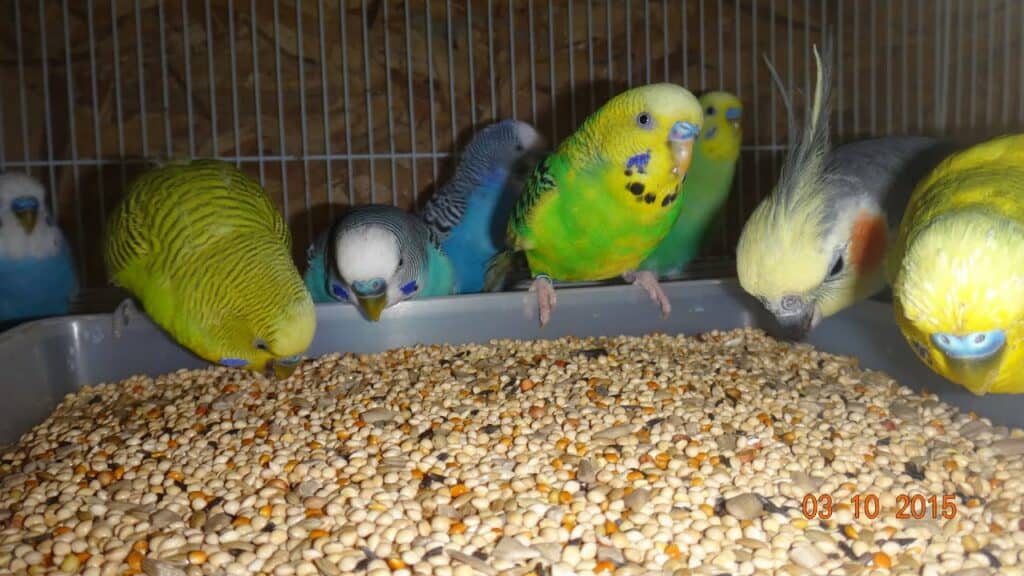
Although most birds avoid them, these seeds are frequently utilized as fillers in packaged bird seed mixtures. A fresh seed becomes more quickly contaminated by waste seed, which serves as a breeding ground for bacteria and fungi.
Birdseed blends using these seeds should not be used; always check the ingredients list. Make sure the small, red seeds in a seed mix are milo or sorghum rather than red millet, especially if there are many of them.
13. Rapeseed And Canary Seed
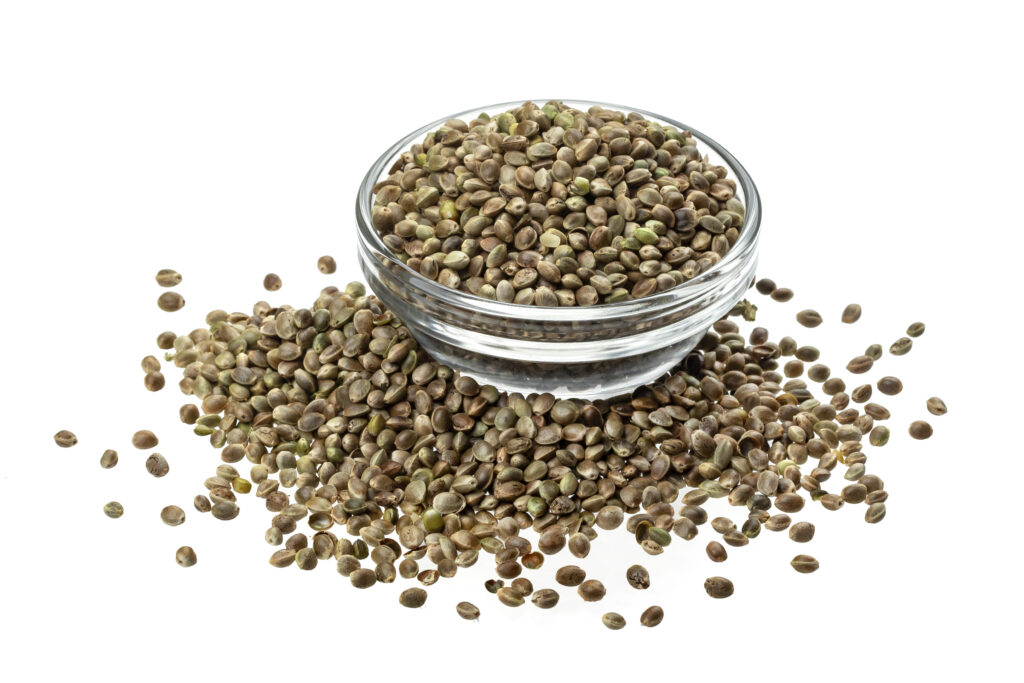
These two seed varieties don’t provide much more than the more common seeds. Some birds, like quails, doves, finches, and juncos, do consume rapeseed. The rapeseed will go bad if you don’t purchase these.
House Sparrows and cowbirds—birds that many people would prefer not to attract—love canary seed. A sunflower seed is a superior option overall because it is equally as palatable to other animals that use canary seeds.
14. Cheap And Premium Mixes
Premium Mixes are containers containing a selection of bird seeds that appeal to a wide range of birds. Often made up of a mixture of peanut, millet, striped sunflower, and other grains.
Cheap mixes rarely draw the most coveted birds, even though they won’t be labeled as such. Often made out of seeds, cracked corn, wheat, striped sunflower, red and white milo, and other grains and cereals.
Any desirable birds that consume these kinds of bird food will happily visit any other varieties of bird seed that you provide in your yard.
The majority of birds will fling or kick out this kind of seed. You can observe them picking it out or watching them use their feet to scratch it out of a tray feeder.
The majority of the less expensive mixtures are derived from the poultry sector. Therefore, they are not appropriate for avid bird watchers.
15. Oats

Numerous bird species eat oats that have been cultivated for cereal or as fodder for animals. Although oats are rarely used in contemporary bird seed blends, you can try providing them on a platform feeder or in a hopper.
Doves and quail are among the species that are most likely to be drawn to oats.
Check out this article on Can Birds Smell Seeds?
Conclusion
It’s crucial to choose the right kinds of bird seed for your bird feeding station. The types of birds you want to attract must be weighed against your financial constraints.
There is no ideal solution or one particular bird meal to utilize. It all depends on your own preferences.
This article discussed and listed the 15 different kinds of seeds that birds eat and that you can use for your backyard birds.
FAQ
What Ingredients Are In Bird Seed?
Sunflowers, corn, millet, fruits (including raisins and cherries), and peanuts are the most often used ingredients in bird seed.
From Nebraska, Kansas, North Dakota, and South Dakota, many of these crops are produced. Sunflower seeds are one of the main components of bird seed.
A Bird Consumes How Much Bird Seed?
Birds consume half to a quarter of their body weight in food per day on average. For instance, a seed-eating bird like the two lb. cardinal would eat between 1/2 and 1 lb. of seeds every day.
What Colour Food is Important to Birds?
Bright colors are those that birds prefer to eat, according to research. For instance, hummingbirds are drawn to the color red because it may remind them of the flowers they eat nectar from.
In addition to being soft and filling, fruits are also very well-liked by birds since they are colorful and appealing.
What Are Young Birds Fed?
They frequently consume the same foods that their parents do. Typically, this includes things like earthworms, seeds, and insects. A bird parent will collect and eat insects, worms, or seeds when searching for food to feed its young.
What Do Birds Consume?
Both the bird and the season play a role. Some consume grains, dead animals, trash, insects, small mammals, fish, buds, larvae, aquatic invertebrates, acorns, and other nuts, as well as seeds, berries, fruit, insects, other birds, eggs, and a variety of other foods.
The majority of songbirds mostly consume insects and spiders in the spring and summer. Insects are incredibly nutrient-dense and simple to detect and catch. However, birds that don’t migrate must eat fruits and seeds to survive during the fall and winter.
When Is The Ideal Time Of Day To Leave Food Out?
It’s okay to put out food at any time, but if you can, try to make sure that there is bird food accessible early in the morning and again when dusk approaches (especially during winter and autumn).
Birds need to be either refueling lost energy from the night (remember, breakfast is the most critical meal of the day) or acquiring enough energy to get through what may be a long, cold night at these times in particular.
What If The Seeds Aren't Eaten By The Birds?
It makes sense that birds won’t find the seeds you’ve set out tasty if they’ve grown stale or soggy.
When seeds are left out for too long, they can decay and soon become a haven for bacteria and fungi to grow.
Because birds are finicky eaters, you should be sure to clean up your bird feed every other day and replace it when it starts to spoil from being out in the elements.
Nyjer seeds are beloved by goldfinches, but when surroundings are unsanitary, they are easily scared away.
Last Updated on March 22, 2023 by Lily Aldrin
